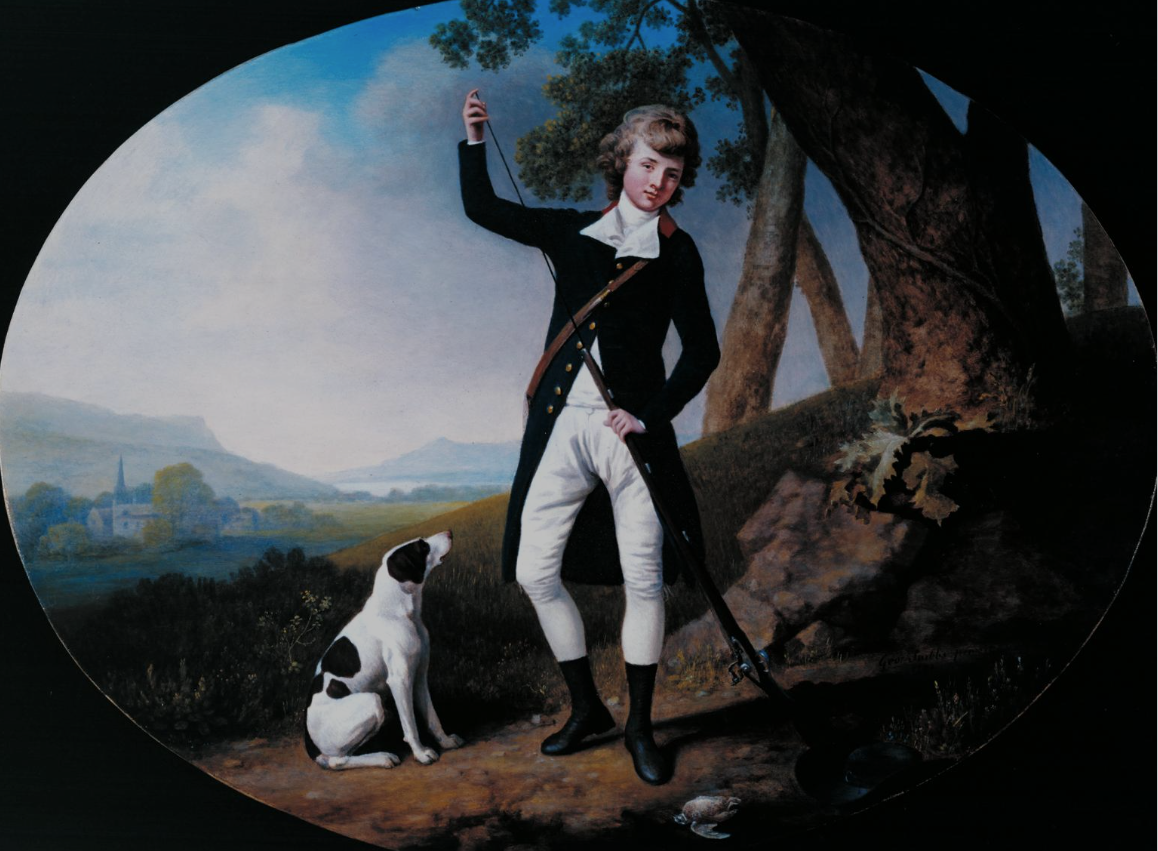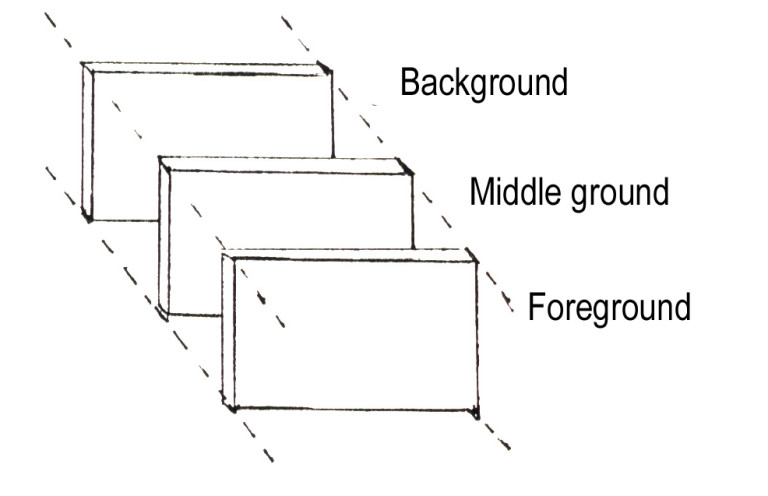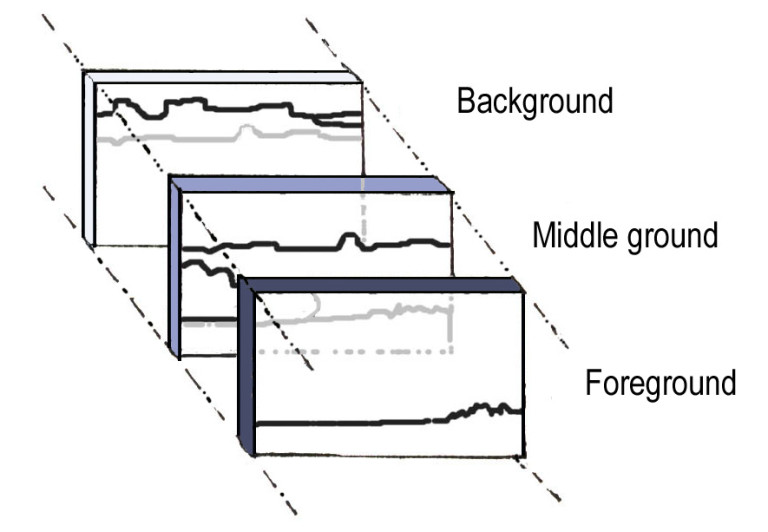Lesson : Landscape- Atmospheric Perspective
Landscape
A landscape artwork, whether a painting or drawing, centres on natural scenery like mountains, forests, trees, rivers, and valleys.
The appreciation of nature as its own subject in art is relatively new. Before the 17th century, landscapes were usually just backgrounds for portraits or religious, mythological, and historical paintings.

Portrait of a Young Gentleman Out Shooting, 1781, George Stubbs
Today, landscapes remain a popular theme in art, with many artists using tools like video, photography, and classification to explore how we interact with our surroundings and document our impact on the environment.

Spanish Landscape with Mountains, 1924, Dora Carrington
An illusion of depth can be applied to both short distances, and to creating the illusion of infinity. Depth plays a crucial role in all painting styles, whether abstract, landscape, or still life.
When you create atmospheric perspective, you will treat the objects in the front or foreground differently than the objects in the back.

Artists can think of their paintings as a stage with cut-out scenery. They can divide the picture into foreground, middle ground, and background. This makes the painting look more organized and adds depth.


When using an atmospheric perspective :
As depth increases:
- Details become blurred if not completely lost.
- Edges become gradually softer the further the distance you want to portray.
- Color becomes cooler.
- Color becomes less intense and more de-saturated or neutralized.
- The contrast between shapes and values diminishes
Why do things change in appearance as they go back in space?
Because of the atmosphere! The air is full of stuff, like dust, water, and pollution. There's an atmosphere between you and those mountains that's going to distort the shape of things. The farther away the objects are the less color and details you can see

David Hockney, Portrait of an Artist (Pool with Two Figures), 1971Vocabulary: Landscape Painting
landscape: a picture with mostly natural objects in a scene showing open space and depth
reflection: the mirroring of an object or objects on a shiny surface
foreground: the area of the picture plane containing larger objects, more details, and brighter colors
middle ground: the eye-level line, usually on or close to the horizon line on a landscape
background: the area of the picture plane containing objects that are higher, smaller, and more neutral in color